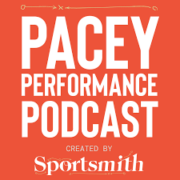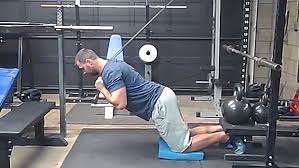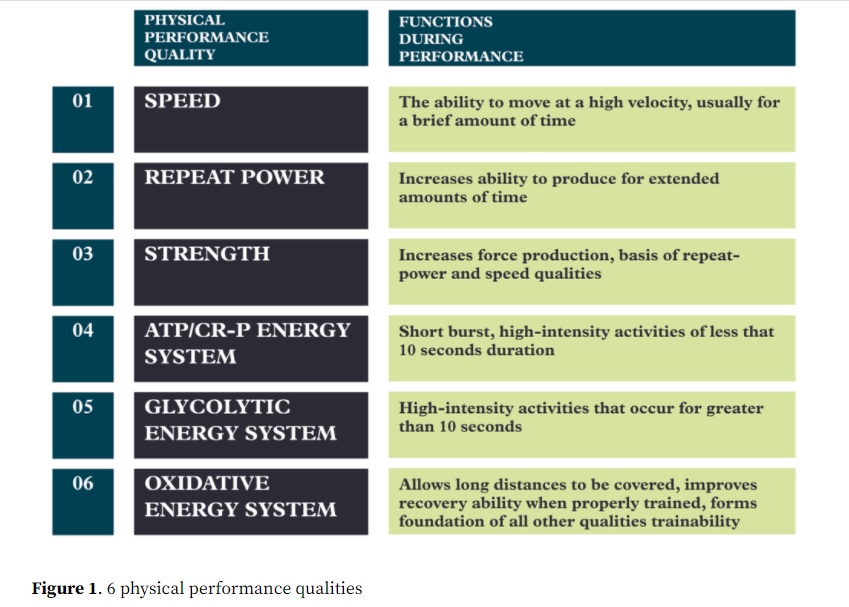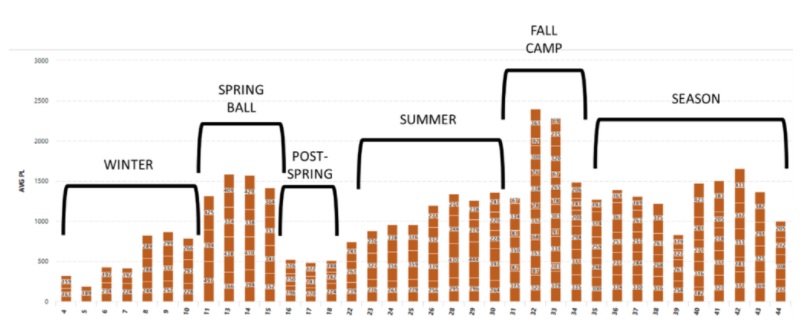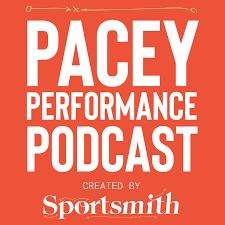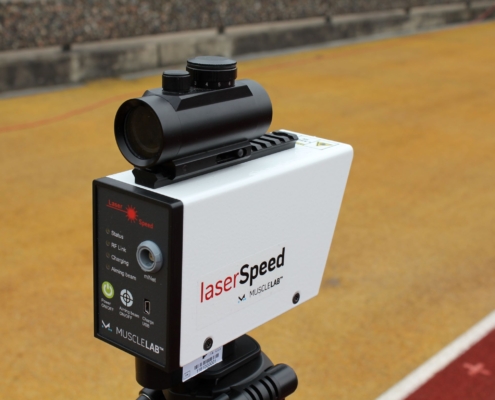Pacey Performance Podcast REVIEW- Episode 361 John Wagle
This blog is a review of the Pacey Performance Podcast Episode 361 – John Wagle
John Wagler
Director of Performance Science and Player Development, Kansas City Royals (MLB)
Background:
John Wagler
Previously, he earned his PhD at East Tennessee State University, worked at DePaul University as a strength and conditioning coach, and spent some time prior to that as a baseball coach.
Discussion topics:
What are the benefits of eccentric training?
”The benefits of eccentric to me really comes down to the fact the force production isn’t constrained by the lengthening velocity. We can produce really high forces at really high speeds, which happens to occur quite often in sport. That pairs pretty well with how we need to adequately prepare athletes for the demands of sport.
A lot of the tangible benefits are with longer term applications of eccentric training in programme design:
- Fast fibre cross sectional area changes
- More explosive performance
- Longer fascicles
- More sarcomeres in series
- Stronger anabolic signals
- Stiffer muscle tendon units
I think the commercialisation of flywheel has been a big part of the resurgence in interest in eccentric training, as well as researchers who have done a lot of research in this space (Dr Haff, Jamie Douglas – see his review paper below ?, Melissa Harden)
Chronic Adaptations to Eccentric Training: A Systematic Review
Direct links to dynamic athletic performance, what kind of benefits are we going to get from eccentric training?
”On the shortening velocity side that’s where the sarcomeres in series come into play for performance, and from the injury risk side we are getting longer fascicles as well, so something like the Nordic leg curl is very well supported in the literature especially when you do add eccentric overload, and it really seems to have an influence on muscle architectural changes within the muscle.
There does seem to be a preferential hypertrophy to fast fibres which can help us in a couple of ways, obviously we are going to have bigger and faster fast twitch fibres, but there is also a potential or theoretical situation where we have less drag from the slow twitch fibres just because the fast twitch fibres are making up a larger relative proportion of the whole muscle cross sectional area. And you do have a stiffer muscle tendon unit which is going to lend itself very well to dynamic athletic performance.
You have stronger anabolic signalling with eccentric training and more satellite cell activation which in theory is going to get you some more muscle size change at the fibre specific level rather than whole muscle, and then more voluntary agonist activation and down regulation of any inhibitory response of the nervous system. That’s not to say because of that list I should only focus on eccentric training as it’s only a piece of the puzzle but I do think it’s an under appreciated programming variable especially with its versatility.”
With all its benefits why would coaches not take this on board, and implement some of it into their training programme?
”Some of it is on the athlete safety side with the supra-maximal eccentric loading, and that all gets bucketed into eccentric training, although eccentric training does not necessarily have to be supra-maximal, but I do think there is a stigma that this a very stressful stimulus, and it is, like even in the sub-maximal versions of it, there is certainly some physiological stress associated with this that doesn’t necessarily appear with other training methods. But I do think there is a way to programme in it, with the acknowledged apprehension because of the potential implications of recovery status of their athletes.
People point very readily to the repeated bout effect and that’s certainly something that we need to consider, but you are still going to be disruptive to the recovery status of the athlete if you are progressing and providing adequate overload and variation regardless of what you are doing with the eccentric training side so the repeated bout affect doesn’t absolve us from considering the stress induced from eccentric training.
The repeated bout effect refers to the adaptation whereby a single bout of eccentric exercise protects against muscle damage from subsequent eccentric bouts. … There is some evidence to suggest that the repeated bout effect is associated with a shift toward greater recruitment of slow twitch motor units
For anyone who hasn’t introduced eccentric focused training before, where would you start and what would you recommend for people to progress through?”
”Level zero for me would be the tempo or movement cadence manipulation with eccentric training. There is actually not a tonne of support for it, especially in terms of strength and power adaptations which is pretty logical if I slow the eccentric phase down I’m not going to be able to use as much weight, and that intensity down shift has implications for strength and power changes.
There has certainly been some studies that have shown muscle size changes but my interpretation of literature is that I have yet to be convinced that slowing down the eccentric phase is superior to regular ol resistance training without a targeted approach to movement cadence. But that being said, I do think there is a lot to be gained to revisit technique and make sure that those things are really sound and to make sure you are stressing tissues the way that you intend.
I like flywheel as the next logical progression.
There is a little bit of elongation, let’s call it, between the eccentric and concentric phase when you have to overcome the inertia at the bottom of a squat for example, where it can give people time to produce a lot of force but they are not necessarily ready to produce that force rapidly, so the flywheel lends itself well next, plus there is a little bit more [research] support on the hypertrophy side, and especially for the lesser trained athlete so you’ll also see some strength, power, and change of direction changes as well.
Then you get into things like accentuated eccentric loading (AEL) and you might progress into that from sub-maximal to supra-maximal and things of that nature, and because of the higher eccentric rate of force development (eRFD) most notably, that lends itself really well to progress to plyometrics and top speed sprinting, which are kind of the tail end of what you would want to expose that athlete to in terms of the highest level of eccentric stress. Whether you want to bucket plyometrics into eccentric training is up to your interpretation, but to me that’s kind of the end of the road, and AEL does a good job of setting you up for some of those more advanced plyometrics.
- Tempo training
- Flywheel training
- AEL
- Plyometrics and sprinting
All that being said, I think it’s important too that it’s more about the blend of these methods, that you’re not going to do one of these methods in isolation, and you would do elements of each no matter what stage of training you are in, and that’s important to be able to set you up for success in progression.”
How can people progress their use of flywheel to then progress onto AEL?
”Flywheel has a longer transition between the eccentric and concentric phase, to give them more time to produce force. There is also an element here where the athlete can control the intensity. A lot of the eccentric overload present in flywheel training is mediated by the concentric velocity. So although there is an element of progressive overload in absolute terms with the size of the wheel, a big chunk of that is mediated by the athlete. So you have a bit more versatility to meet the athlete where they are at, and progress them accordingly.
Accentuated eccentric loading (AEL) prescribes eccentric load magnitude in excess of the concentric prescription using movements that require coupled eccentric and concentric actions, with minimal interruption to natural mechanics.
- Eccentric load is in excess of the concentric load– doesn’t need to be supra-maximal, which automatically makes it different from tempo training where you have the same load on the way down and the way up, and makes it distinct from flywheel training where you have the same inertial load on the way down and way up.
- A coupled eccentric and concentric action– which makes it distinctive from negatives (eccentric only training).
- Minimal interruption to the natural mechanics of the selected exercise– which further differentiates it from flywheel training, a lot of times you are wearing a harness, and if anyone has ever been on the flywheel device, it’s a great training tool so this isn’t a criticism, if you squat on a flywheel it’s different than if you squat with a barbell in terms of the mechanics which will stress tissue differently.
To do this you can use manual resistance from a partner (push ups and nordics etc), weight releasers, hold dumbbells especially as it applies to plyometrics.”
What are the specific benefits of AEL outside of what we have spoken about with eccentric training?
”There does tend to be an acute testosterone and growth hormone response that persists a little bit longer than with traditional loading, and possibly some alterations in glycolytic enzyme production and lactate clearance ability with AEL which could have some advantages for sports that have a large endurance component (soccer, 400m runnner). AEL was typically reserved for strength/power type athletes but that may not be the case with that new research that while it is pretty thinly supported in the research it is intriguing enough to continue to explore.”
Can lower end athletes benefit from some of the AEL methods?
”In terms of loading and the stimulus you are providing, there is not really a barrier to entry besides obviously you have to consider eccentric training is pretty stressful so they are probably going to take a little bit longer to get through the recovery process from that training.
I think too if you are looking to apply AEL for potentiation you have a much narrower window to operate with to actually induce that potentiation. You are walking a tight rope between fatigue and potentiation, and those weaker or less trained athletes, that tight rope is just going to be much thinner. So those that are stronger probably have a little bit more margin for error on programme selection.
I thought for sure with the mechanistic underpinnings there would be a potentiating effect with AEL, such as the muscle is in a greater active state, more calcium sensitivity etc, but it’s actually a really mixed bag [in the research] especially when it’s narrowed to resistance training such as bench press or squatting with weight releasers, there’s just as much research that shows that it is detrimental as it is beneficial to that acute performance, and there appears to be a pretty big sensitivity in programme design and load structure.
Plyos vs. Resistance Training (Short-term acute effect)
So if you were going to do it, and to make sure you are not burying the athlete, it would be best to do it alongside some sort of augmented feedback such as a velocity measurement or a between set counter movement jump. But on the plyometrics side, it is still a little bit of a mixed bag, but there seems to be a little bit more clarity in terms of what is going to work and what isn’t going to work. The studies that do have a favourable acute effect from AEL tend to be ones that have a conservative loading (holding a pair of 10kg dumbbells and also plyometrics that have a lesser centre of mass displacement (AEL doesn’t tend to work with a really large displacement like a deep squat which causes a fatigue effect). But a tight coupling, the rapid eccentric action with an eccentric overload does appear to be where you can induce some potentiation.
I would tend to put my more stressful content at the beginning of the week so I can provide my athletes with the recovery at the back end of the week. So for me AEL to me fits better at the beginning of the week particularly in season, so for players that have a high speed running demand especially upright top speed type running, having an AEL exposure early in the week to expose them to some higher eccentric rate of force developments but not necessarily what they are going to encounter in sprinting. And then have a top speed exposure later in the week, where it is an emphasis in their training, acknowledging that if they are training in their sport in between they will still do some high speed work between those sessions as part of their sports practices.
A nice progression could be:
- AEL counter movement jump (with dumbbell release at bottom)
- Depth jump (shock method)
- AEL depth jump (with dumbbell release at bottom)
- Repeat serial hurdle jumps
Where does this fit into the bigger programme?
”With AEL specifically I do feel it fits very neatly at the tail end of a cycle where you do have a demand to develop some maximal strength or retain the maximal strength you have already developed but stage some of those higher power output or higher velocity efforts, where you are trying run your fastest, jump your highest, be at your best, kind of staging a taper, would be where I would put AEL, in terms of what it can retain and what it can expose the athlete to in terms of high eccentric RFD.
If you are going to follow AEL with a taper you are okay with the intentional high stress nature of that eccentric training, so if you are going to pull training content away to promote that recovery AEL fits really well as part of a over reach to stage taper, or the block prior to set that taper up.”
Top 5 Take Away Points:
- The benefits of eccentric training is that the force production isn’t constrained by the lengthening velocity.
- Eccentric training progression: tempo training, flywheel to AEL and finally plyometrics and sprints.
- Less advanced athletes will need more time to recover from high stress eccentric training.
- There may be a more clearly defined benefit of AEL with plyos for potentiation.
- In annual planning AEL will fit more towards the end of a training cycle with the goal to develop some power prior to a taper.
Want more info on the stuff we have spoken about? Be sure to visit:
Twitter:
@DrJohnPWagle
You may also like from PPP:
Episode 372 Jeremy Sheppard & Dana Agar Newman
Episode 217, 51 Derek Evely
Episode 207, 3 Mike Young
Episode 192 Sprint Masterclass
Episode 87 Dan Pfaff
Episode 55 Jonas Dodoo
Episode 15 Carl Valle
Hope you have found this article useful.
Remember:
- If you’re not subscribed yet, click here to get free email updates, so we can stay in touch.
- Share this post using the buttons on the top and bottom of the post. As one of this blog’s first readers, I’m not just hoping you’ll tell your friends about it. I’m counting on it.
- Leave a comment, telling me where you’re struggling and how I can help
Since you’re here…
…we have a small favor to ask. APA aim to bring you compelling content from the world of sports science and coaching. We are devoted to making athletes fitter, faster and stronger so they can excel in sport. Please take a moment to share the articles on social media, engage the authors with questions and comments below, and link to articles when appropriate if you have a blog or participate on forums of related topics. — APA TEAM

